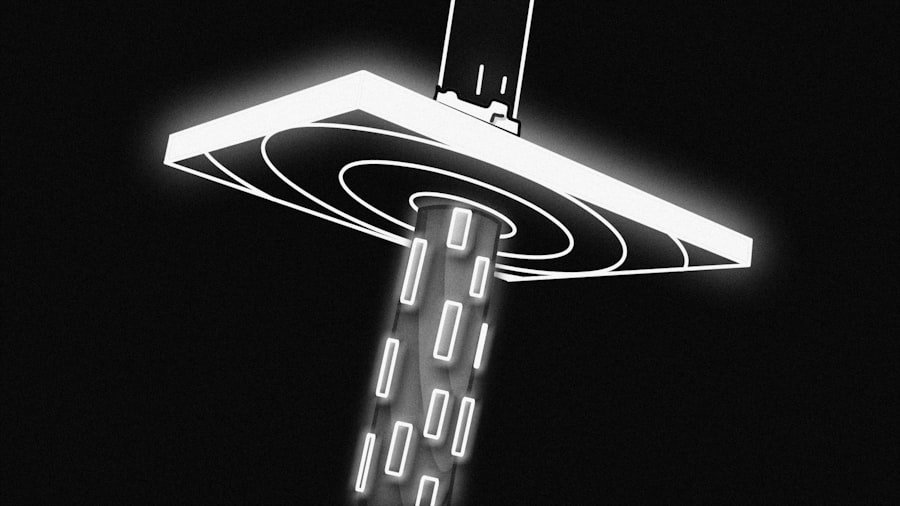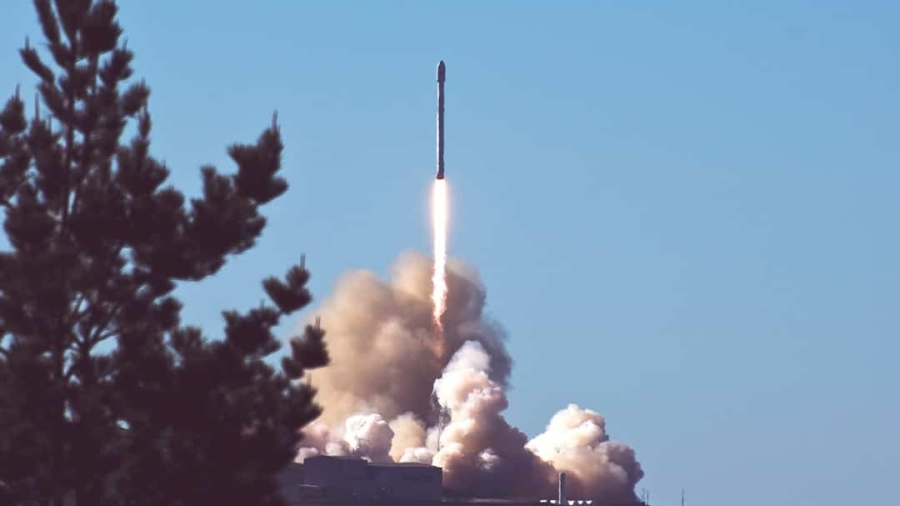The exploration of deep space has long captivated human imagination, driving advancements in technology and science. As we venture further into the cosmos, the complexity of missions increases, necessitating innovative solutions to manage the vast distances, unpredictable environments, and intricate systems involved. Artificial Intelligence (AI) has emerged as a transformative force in this arena, offering capabilities that enhance the efficiency and effectiveness of deep space missions.
By integrating AI into spacecraft technology, we can improve navigation, data analysis, maintenance, and decision-making processes, ultimately pushing the boundaries of what is possible in space exploration. AI’s role in deep space missions is not merely a futuristic concept; it is already being implemented in various capacities. From autonomous rovers on Mars to sophisticated onboard systems in interplanetary probes, AI is revolutionizing how we approach space exploration.
The ability of AI to process vast amounts of data, learn from experiences, and make real-time decisions is particularly valuable in environments where human intervention is limited or impossible. As we look to the future of space exploration, understanding the multifaceted applications of AI becomes essential for harnessing its full potential.
Key Takeaways
- AI is revolutionizing deep space missions by enabling autonomous navigation, data processing, predictive maintenance, and decision-making.
- Advantages of using AI in spacecraft technology include improved efficiency, reduced human error, and the ability to handle complex tasks in real-time.
- AI-powered autonomous navigation and control systems enable spacecraft to adapt to changing environments and make real-time decisions without human intervention.
- AI is crucial for processing and analyzing vast amounts of data collected in deep space, allowing for faster and more accurate insights.
- AI is used for predictive maintenance and fault detection in spacecraft, helping to prevent potential malfunctions and ensuring mission success.
Advantages of using AI in spacecraft technology
The integration of AI into spacecraft technology offers numerous advantages that significantly enhance mission capabilities. One of the most notable benefits is the ability to operate autonomously. In deep space missions, communication delays can be substantial due to the vast distances involved.
For instance, a signal sent from Earth to Mars can take anywhere from 4 to 24 minutes to arrive, depending on their relative positions. This latency makes real-time control impractical, necessitating systems that can make decisions independently. AI algorithms enable spacecraft to analyze their surroundings and make critical decisions without waiting for instructions from mission control, thereby increasing operational efficiency.
Moreover, AI enhances the adaptability of spacecraft systems. Space missions often encounter unforeseen challenges, such as equipment malfunctions or unexpected environmental conditions. Traditional programming methods may struggle to accommodate these variables, but AI systems can learn from new data and adjust their operations accordingly.
For example, NASA’s Mars rovers utilize machine learning algorithms to adapt their navigation strategies based on terrain analysis, allowing them to traverse complex landscapes more effectively. This adaptability not only improves mission success rates but also extends the operational lifespan of spacecraft by enabling them to respond dynamically to changing conditions.
AI-powered autonomous navigation and control systems

Autonomous navigation and control systems powered by AI are at the forefront of modern spacecraft technology. These systems utilize a combination of sensors, machine learning algorithms, and real-time data processing to navigate through space with minimal human intervention. For instance, the European Space Agency’s (ESA) BepiColombo mission to Mercury employs advanced AI algorithms for its autonomous navigation system.
This system allows the spacecraft to make real-time adjustments to its trajectory based on gravitational influences and other dynamic factors encountered during its journey. The implementation of AI in navigation also enhances safety and reliability. Spacecraft must navigate through complex environments that may include asteroid fields or gravitational anomalies.
AI systems can analyze sensor data to identify potential hazards and adjust flight paths accordingly. The ability to predict and respond to these challenges in real time significantly reduces the risk of collisions or mission failures. Additionally, AI-powered control systems can optimize fuel consumption by calculating the most efficient trajectories, ultimately conserving resources and extending mission durations.
AI for data processing and analysis in deep space
Deep space missions generate an immense volume of data that must be processed and analyzed to extract meaningful insights. Traditional methods of data analysis can be time-consuming and may not keep pace with the sheer quantity of information collected by modern instruments. AI offers a solution by automating data processing tasks and employing advanced analytical techniques to uncover patterns and anomalies within the data.
For example, NASA’s Kepler Space Telescope utilized machine learning algorithms to analyze light curves from distant stars in search of exoplanets. By training models on known exoplanet signatures, the system could identify potential candidates with remarkable accuracy. This approach not only accelerated the discovery process but also allowed scientists to focus their efforts on the most promising targets for further investigation.
Similarly, AI is being employed in analyzing data from Mars rovers, where it helps identify geological features and assess potential sites for further exploration.
AI for predictive maintenance and fault detection in spacecraft
The reliability of spacecraft systems is paramount for successful deep space missions, where repairs are often impossible due to distance and isolation. Predictive maintenance powered by AI plays a crucial role in ensuring that spacecraft remain operational throughout their missions. By continuously monitoring system performance and analyzing historical data, AI algorithms can identify patterns indicative of potential failures before they occur.
For instance, NASA’s Jet Propulsion Laboratory has developed predictive maintenance tools that analyze telemetry data from spacecraft systems to forecast when components may require maintenance or replacement. This proactive approach allows mission planners to schedule maintenance activities during periods of low operational demand or when the spacecraft is in a stable state. By addressing issues before they escalate into critical failures, predictive maintenance enhances mission reliability and reduces the risk of costly downtime.
Fault detection is another area where AI excels in spacecraft technology. Advanced machine learning algorithms can analyze sensor data in real time to identify anomalies that may indicate system malfunctions. For example, if a spacecraft’s power system begins to exhibit unusual behavior, an AI-driven fault detection system can alert operators and suggest corrective actions based on historical data and learned patterns.
This capability not only improves response times but also enhances overall mission safety.
AI for decision-making and problem-solving in deep space missions

In the context of deep space missions, decision-making processes can be complex and multifaceted due to the myriad factors that influence mission success. AI provides a powerful tool for enhancing decision-making capabilities by synthesizing vast amounts of information and generating actionable insights. By leveraging machine learning algorithms, AI systems can evaluate multiple scenarios and recommend optimal courses of action based on predefined objectives.
For example, during the Mars 2020 mission, the Perseverance rover utilized AI algorithms to determine its path across the Martian surface. The rover’s onboard systems analyzed terrain data and identified safe routes while avoiding obstacles such as rocks or steep inclines. This autonomous decision-making capability allowed Perseverance to navigate efficiently while conducting scientific experiments without constant input from mission control.
Moreover, AI can assist in problem-solving during critical situations where human intervention may be limited due to communication delays or other constraints. In scenarios where unexpected challenges arise—such as equipment malfunctions or environmental hazards—AI systems can quickly assess the situation and propose solutions based on learned experiences from previous missions. This capability not only enhances mission resilience but also empowers spacecraft to operate effectively in dynamic environments.
Challenges and limitations of AI in deep space exploration
Despite its numerous advantages, the integration of AI into deep space exploration is not without challenges and limitations. One significant hurdle is the need for robust training data to develop effective machine learning models. In many cases, historical data from previous missions may be limited or unavailable, making it difficult to train algorithms accurately.
This lack of data can hinder the performance of AI systems in unfamiliar environments or situations. Additionally, the unpredictable nature of deep space environments poses challenges for AI algorithms that rely on pattern recognition and learned experiences. For instance, while an AI system may perform well in simulations or controlled conditions on Earth, it may struggle when faced with unforeseen circumstances in space.
The variability of conditions—such as radiation levels, microgravity effects, or extreme temperatures—can impact sensor performance and data quality, complicating the decision-making processes. Another challenge lies in ensuring the reliability and safety of AI systems in critical applications. Spacecraft must operate under stringent safety standards, and any failure in an AI-driven system could have catastrophic consequences for a mission.
Developing fail-safe mechanisms and ensuring that AI systems can operate reliably under various conditions is essential for mitigating risks associated with autonomous operations.
Future prospects of AI in spacecraft technology
Looking ahead, the future prospects of AI in spacecraft technology are promising and hold great potential for advancing our understanding of the universe. As machine learning techniques continue to evolve, we can expect more sophisticated algorithms capable of handling increasingly complex tasks in real-time environments. The development of quantum computing may further enhance AI capabilities by enabling faster processing speeds and more efficient data analysis.
Moreover, as we embark on ambitious missions beyond our solar system—such as crewed missions to Mars or explorations of exoplanets—AI will play a crucial role in managing the complexities associated with long-duration space travel. Autonomous systems will be essential for maintaining life support systems, managing resources, and ensuring crew safety during extended missions where communication with Earth may be limited. Collaboration between researchers, engineers, and scientists will be vital for unlocking the full potential of AI in deep space exploration.
By sharing knowledge and expertise across disciplines, we can develop innovative solutions that address current challenges while paving the way for future advancements in spacecraft technology. As we continue to push the boundaries of exploration beyond our planet, AI will undoubtedly remain at the forefront of this exciting journey into the unknown.
This article explores how AI is being used to generate high-quality videos quickly and efficiently, making it a valuable tool for content creators and marketers. To learn more about the best AI video generator software available, check out the article here.
FAQs
What is AI?
AI, or artificial intelligence, refers to the simulation of human intelligence in machines that are programmed to think and act like humans. This includes tasks such as learning, problem-solving, and decision-making.
How is AI being used in spacecraft for deep space missions?
AI is being used in spacecraft for deep space missions to enable autonomous decision-making, improve navigation and communication, and enhance scientific data analysis. AI can help spacecraft adapt to changing conditions in space and make real-time decisions without human intervention.
What are the benefits of using AI in spacecraft for deep space missions?
The use of AI in spacecraft for deep space missions can lead to improved efficiency, reduced communication delays, and increased scientific discovery. AI can also help spacecraft navigate through challenging environments and respond to unexpected events, ultimately increasing the success of deep space missions.
What are some examples of AI technologies being used in spacecraft for deep space missions?
Some examples of AI technologies being used in spacecraft for deep space missions include machine learning algorithms for autonomous navigation, natural language processing for improved communication with ground control, and computer vision for analyzing scientific data collected during the mission.
Are there any challenges or limitations to using AI in spacecraft for deep space missions?
Some challenges and limitations of using AI in spacecraft for deep space missions include the potential for software errors, the need for robust testing and validation of AI systems, and the ethical considerations of autonomous decision-making in space. Additionally, the complexity of deep space environments can present unique challenges for AI systems.

